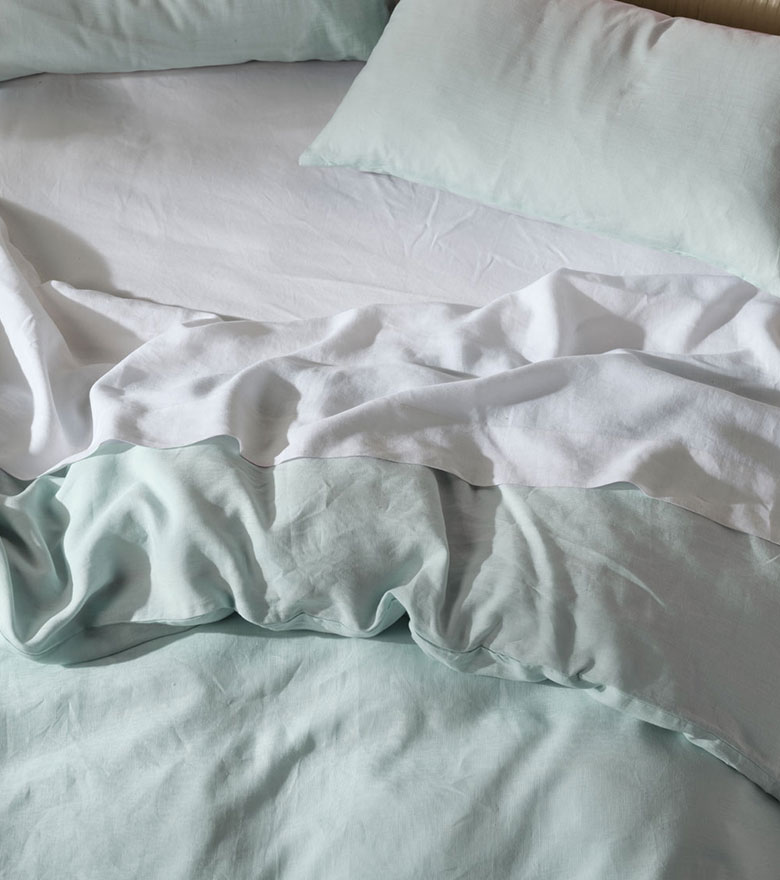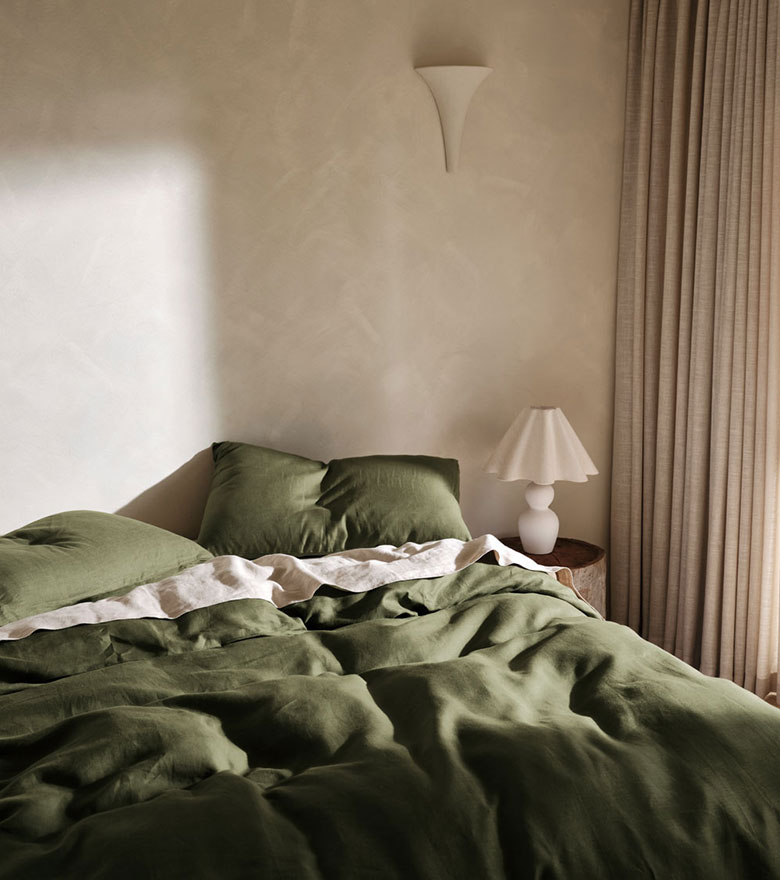This Is How To Care For Your Pure Linen
Julia Canella | Home | 20 February 2025
Once you've made your investment in pure linen, it's worth knowing how to look after this much-adored, historical fabric.
Doing so is essential for its longevity, and it loving you just as much in return.
Linen – let's break it down
Linen is a textile woven from the fibres of a flax plant.
Flax is a less-known yet intriguing crop used in various ways, such as producing oil, fabric, food, and much more.
The species grown specifically for linen textile production is known as linum usitatissium, Latin for "the most useful kind of flax", and you guessed it – we're right on board.
Flax that produces linen has a short-growing cycle of only 100 days, which in botanical terms, is quite short. In this time, the plant grows into long stems, blooming into a flower for one day only.
Following this, the flax plant is uprooted, and stacked into hedges to dry while its seeds are removed.
Finally, the plant is exposed to moisture, combing, spinning, weaving and dying – an exhaustive process that yields phenomenal results.
It's the friend with benefits
For those of us more familiar with sleeping in cotton sateen, which has a lustrous feel, pure linen bedding may sometimes take some getting used to.
But while newly purchased linen may feel significantly different to sateen, the more it's used and laundered, the softer it becomes, ending up equally as soft as the lustrous textiles, and sometimes, more so.
Rome wasn't built in a day, so when it comes to your pure linen, it helps to see it through its initial washes – you'll see how much you'll be rewarded.
What's more?
Well, this is why Nimes, our much-adored pure linen range, simply reigns:
- It's amazingly soft against your skin.
- It absorbs moisture galore – take note if you're a hot sleeper.
- It keeps you cool and dry, better than any other fabric.
- It's highly non-allergenic, as harvesting flax itself uses less pesticides and fertilisers than other crops.
- It's recyclable and biodegradable.
- Dream table setting alert.
- No ironing is required – the creases and natural drape add to its appeal #ditchthehousework

Housework done right – caring for your linen
To keep your linen threads in superb condition (and sticking around for the long-haul), we recommend the following:
- Wash in a gentle, cold or lukewarm cycle with mild detergent to protect its fibres.
- Tumble-drying when it's new – it speeds up the softening process.
- Quilt covers – turn them inside-out for the wash cycle.
- Remove it from your dryer while slightly damp, and hang it to reduce wrinkles and stiffness.
- Stains? Breathe deeply, and remember, any and all generic stain removers may be used.
- Beauty lovers – beware of benzyl peroxide, this cosmetic ingredient can stain permanently. Wash it off before bedtime, or cover your pillowcase with a towel for one night if washing isn't possible.

Shop this story
See what we're harping on about – our varied range of pure linens live here.
Follow us
#LINENHOUSE / @LINEN_HOUSE
After more inspiration?
Return to blog home here.





